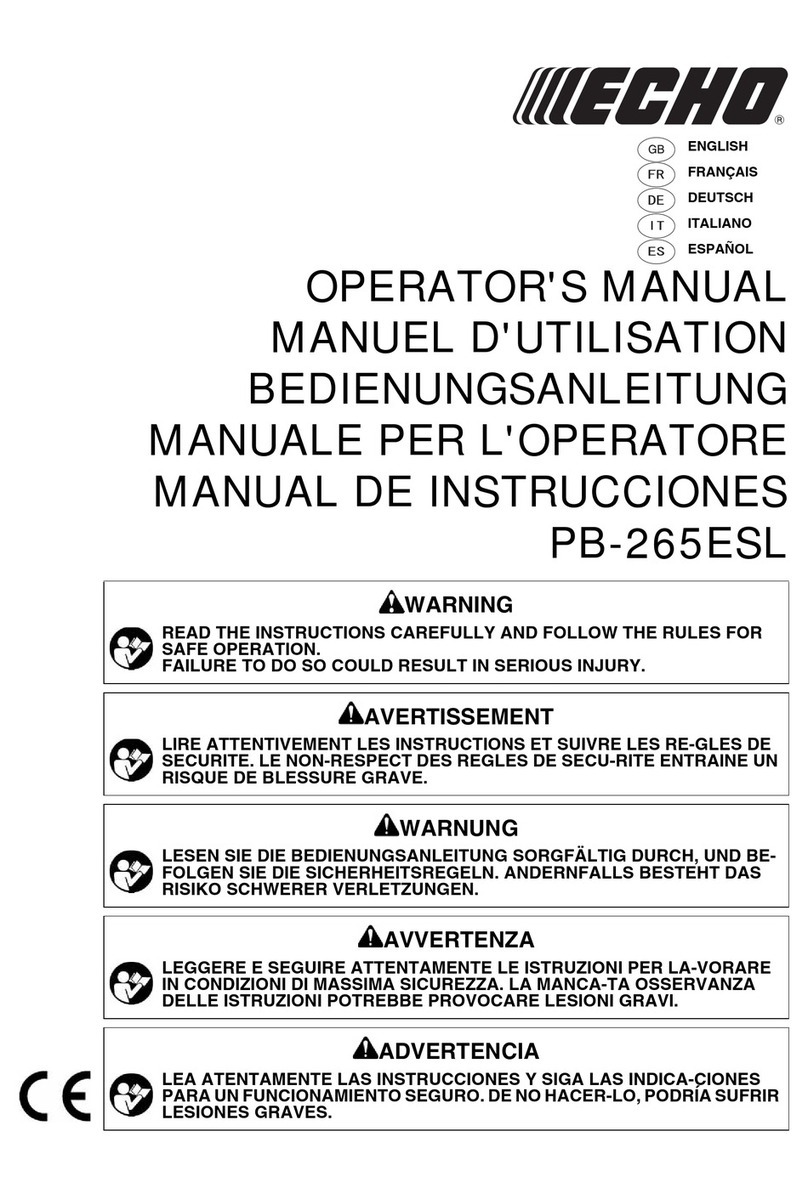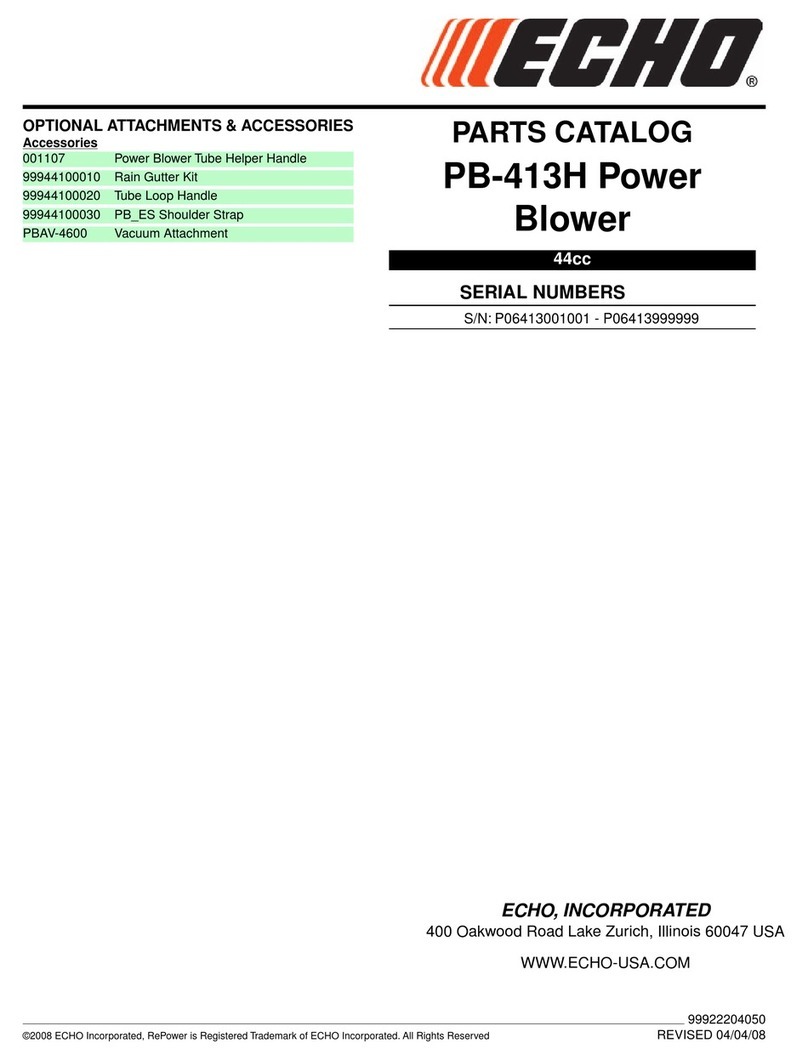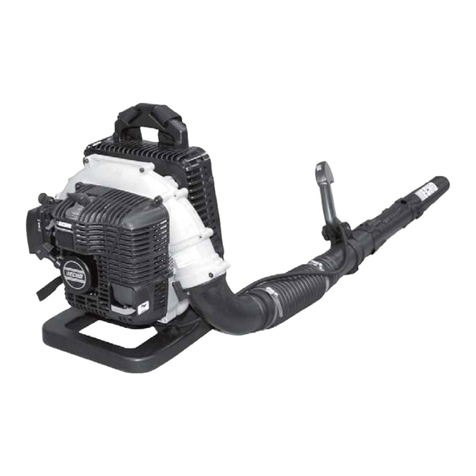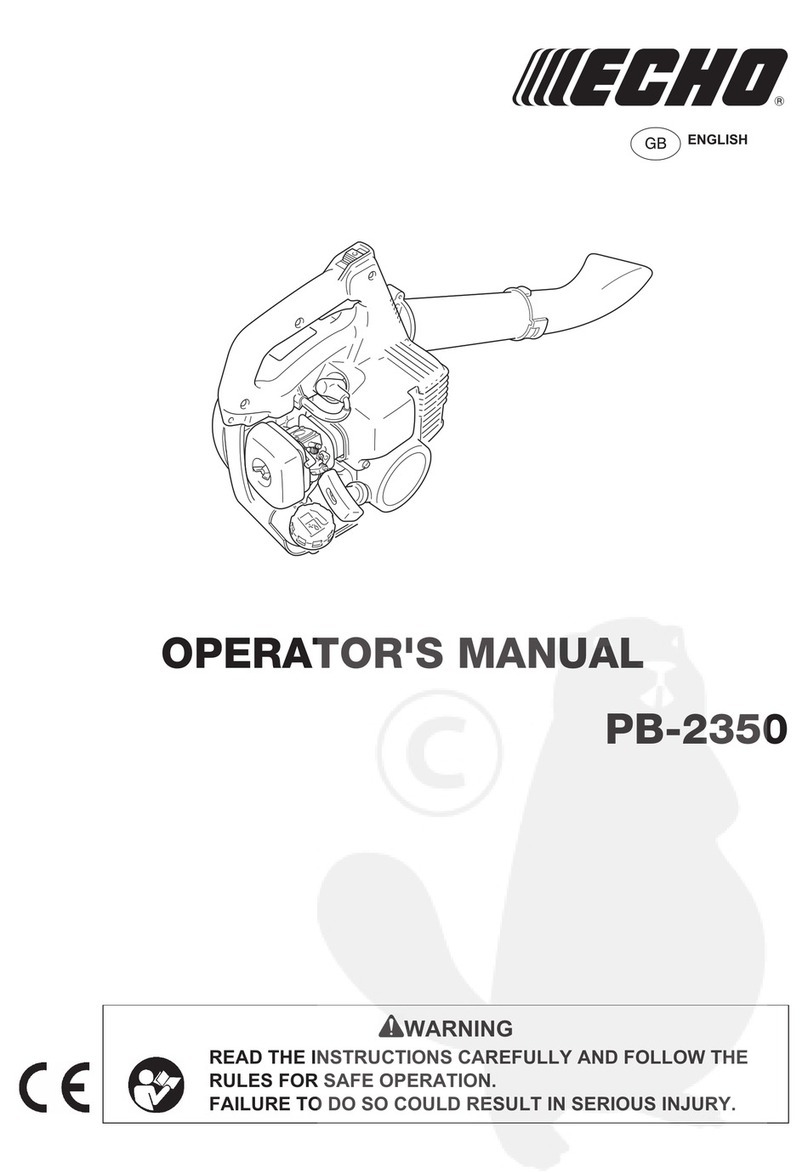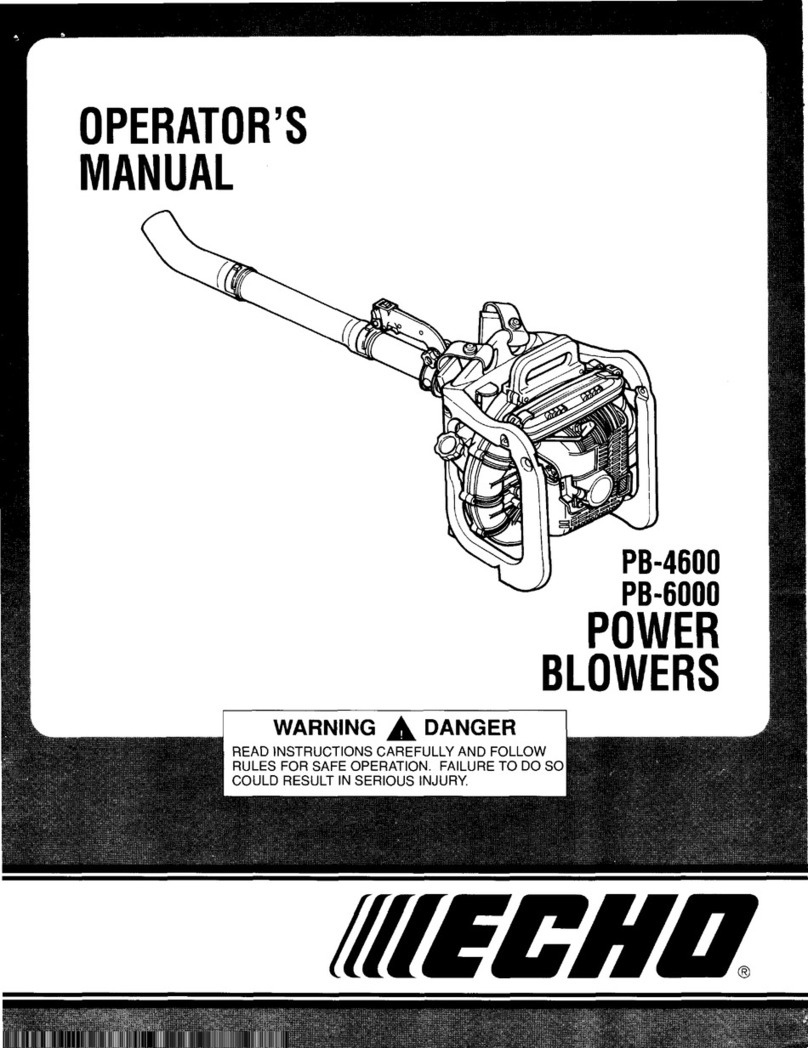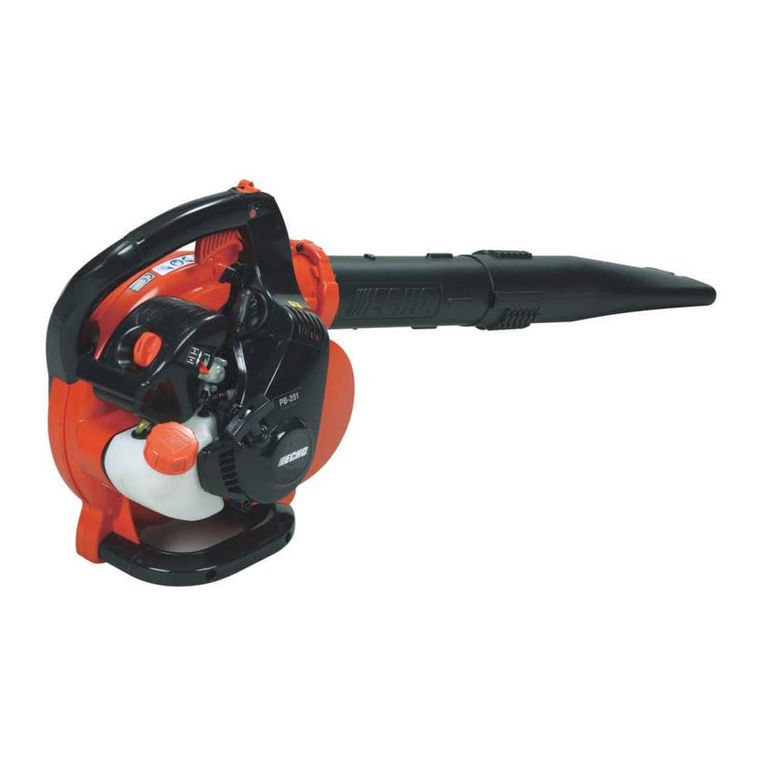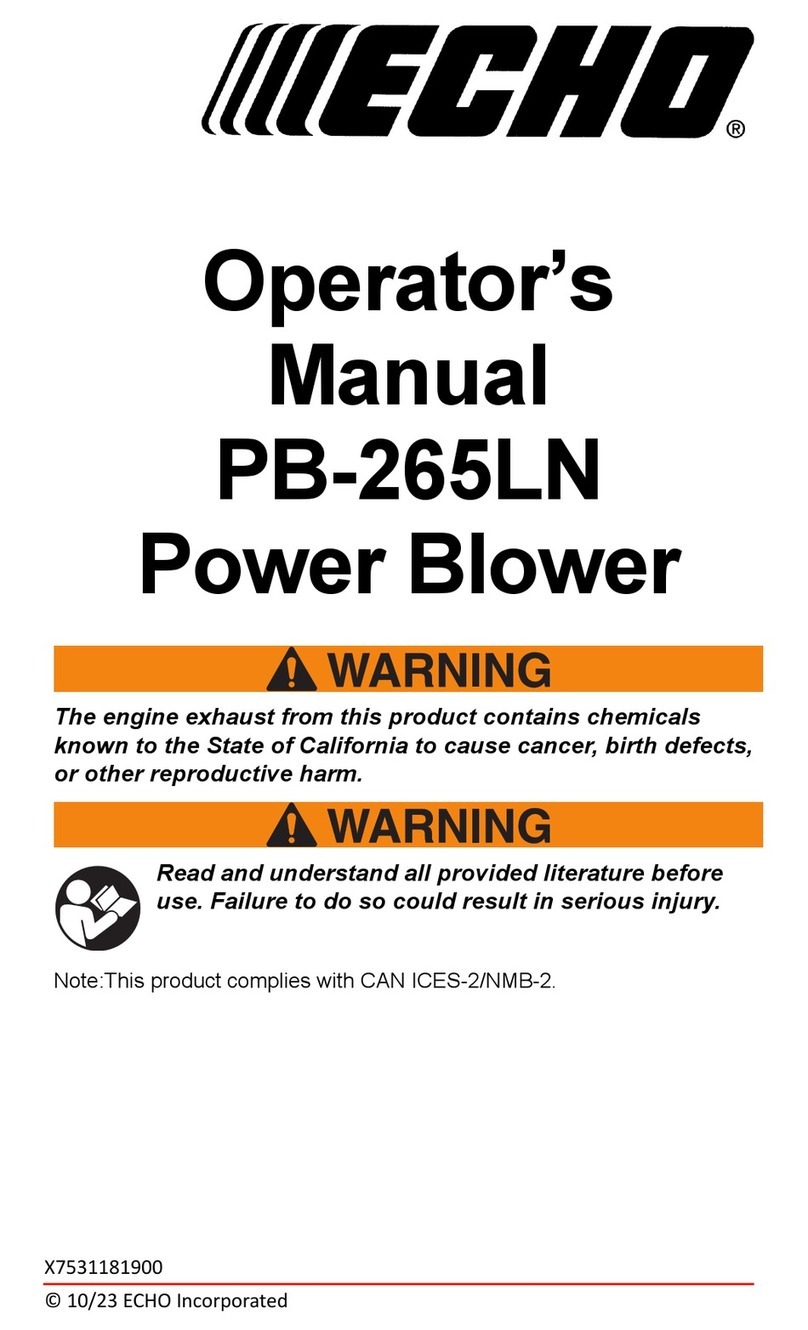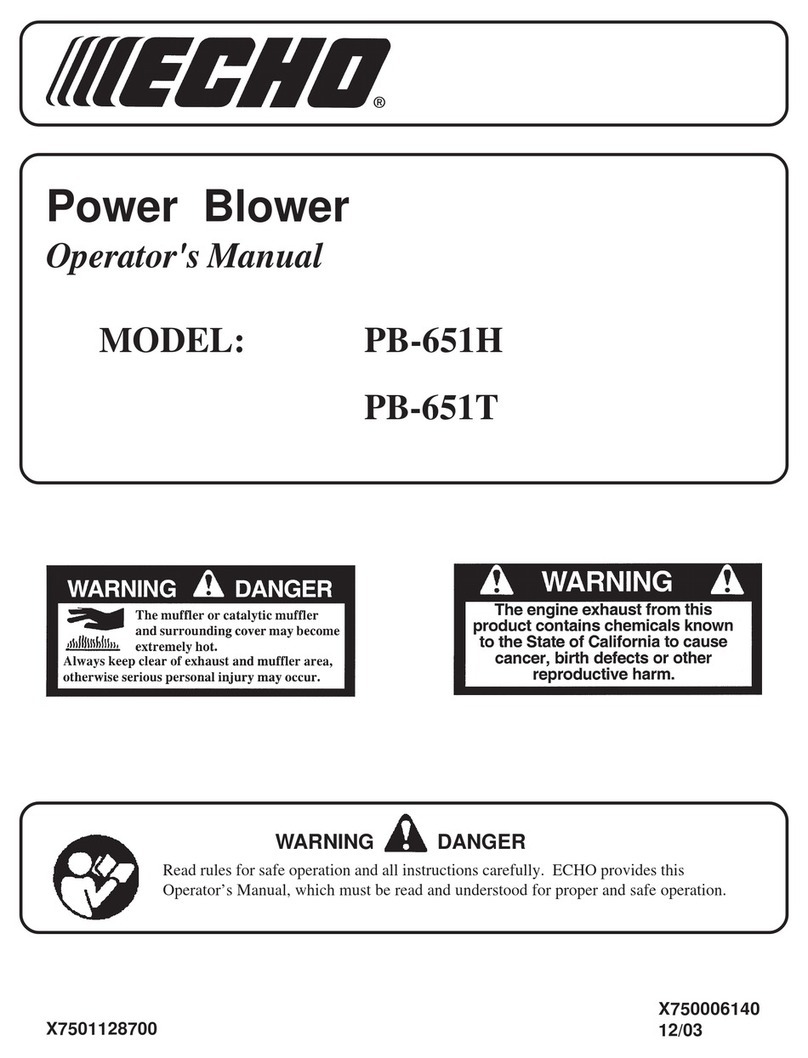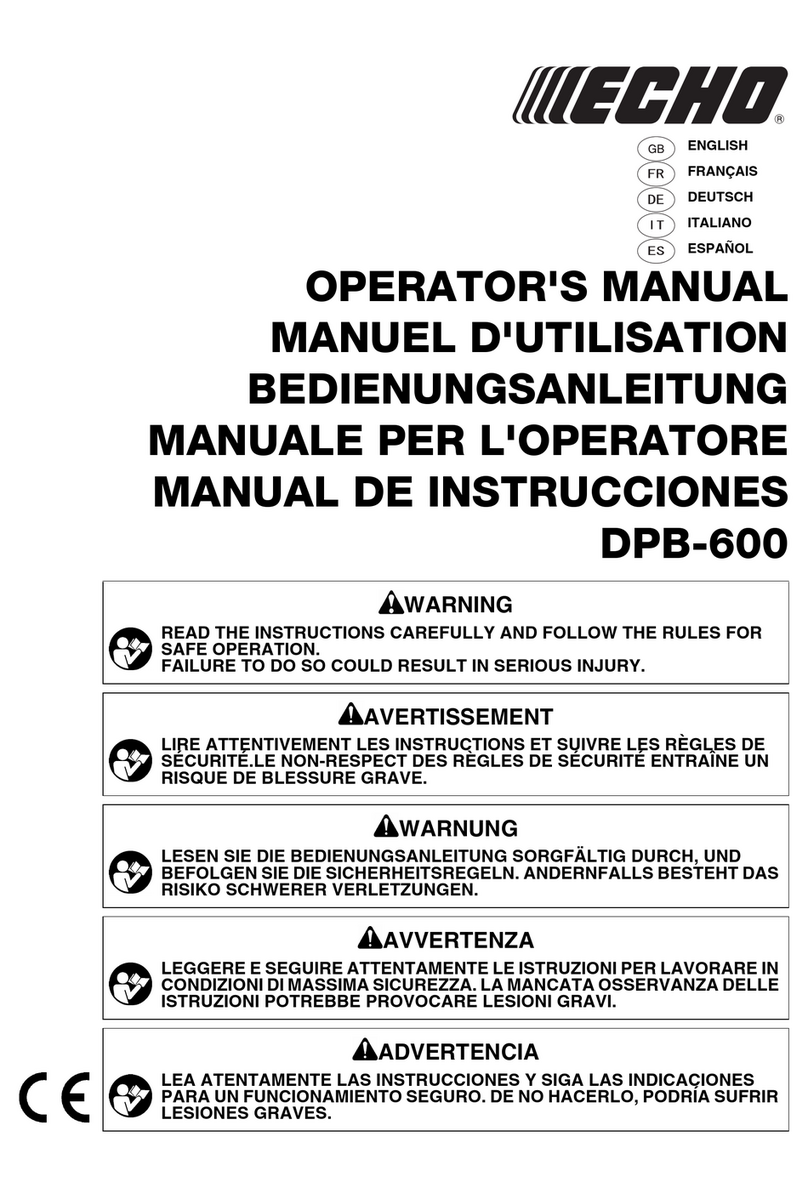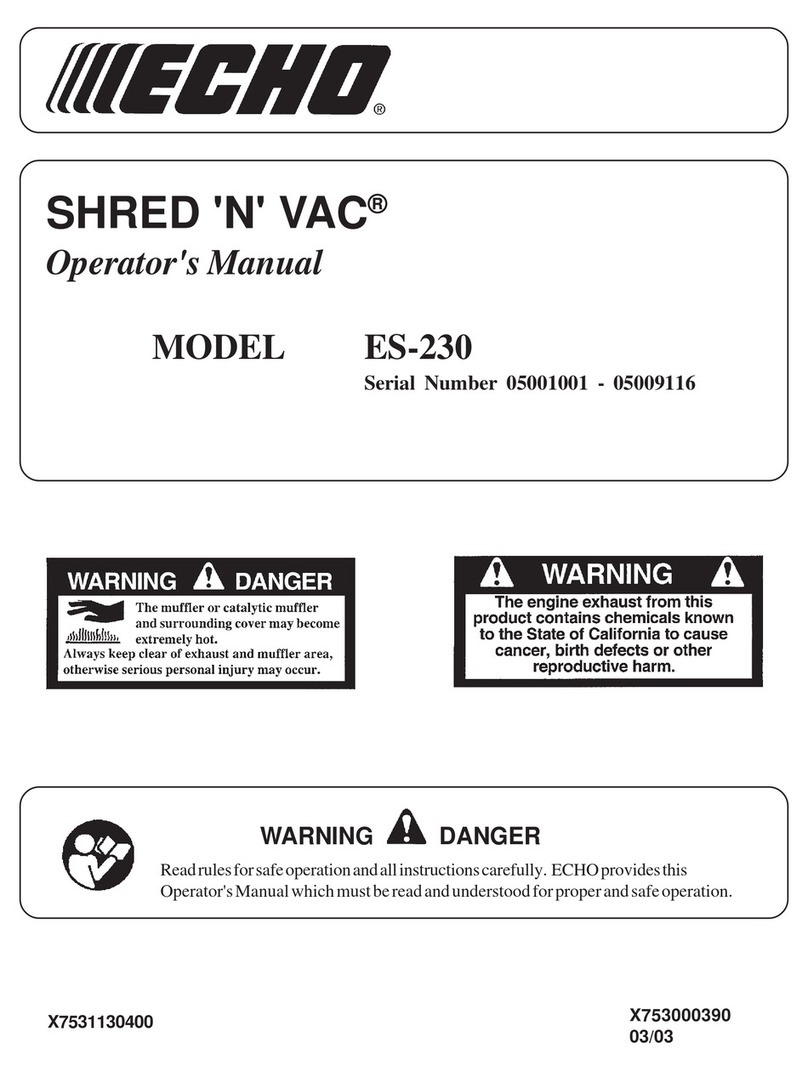
2
INTRODUCTION
Welcome to the ECHO family. This ECHO product was designed and manufactured to provide long life and on-the-job-
dependability. Read and understand this manual. You will find it easy to use and full of helpful operating tips and
SAFETYmessages.
THE OPERATOR'SMANUAL
Read and understand this manual before operation. Keep it in a safe
place for future reference. It contains specifications and information for
operation, starting, stopping, maintenance, storage and assembly
specific to this product.
Copyright© 2006 By Echo, Incorporated
All Rights Reserved.
TABLE OF CONTENTS
Introduction...............................................................2
- The Operator's Manual.......................................2
Safety .........................................................................3
- Manual Safety Symbols and Important
Information .........................................................3
- InternationalSymbols ........................................3
- Personal Condition and Safety Equipment .........3
- EquipmentCheck................................................6
EmissionControl .......................................................6
Description ................................................................7
Contents .................................................................. 11
Assembly ................................................................. 12
- InstallBlowerPipes/StickHandle(PB-413H) .. 12
- InstallBlowerPipes(PB-413T).......................... 13
Operation ................................................................. 14
- Fuel ................................................................... 14
- StartingColdEngine ......................................... 15
- StartingWarmEngine ....................................... 16
- Stopping Engine ............................................... 16
- OperatingBlower .............................................. 17
Maintenance ............................................................ 18
- SkillLevels ........................................................ 18
- Maintenance Intervals ...................................... 18
- AirFilter ............................................................ 19
- FuelFilter .......................................................... 19
- SparkPlug......................................................... 20
- CoolingSystem................................................. 20
- ExhaustSystem................................................. 21
- Carburetor Adjustment ..................................... 22
Troubleshooting ...................................................... 24
Storage..................................................................... 25
Specifications........................................................... 26
ServicingInformation............................................... 28
- Parts/SerialNumber .......................................... 28
- Service .............................................................. 28
- ECHOConsumer ProductSupport.................... 28
- Warranty Registration ...................................... 28
- Additional or Replacement Manuals ................ 28
Specifications, descriptions and illustrative material in this
literature are as accurate as known at the time of publication,
but are subject to change without notice. Illustrations may
include optional equipment and accessories, and may not
include all standard equipment.

